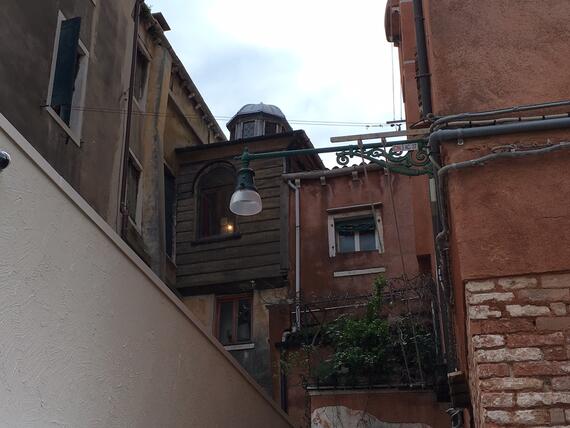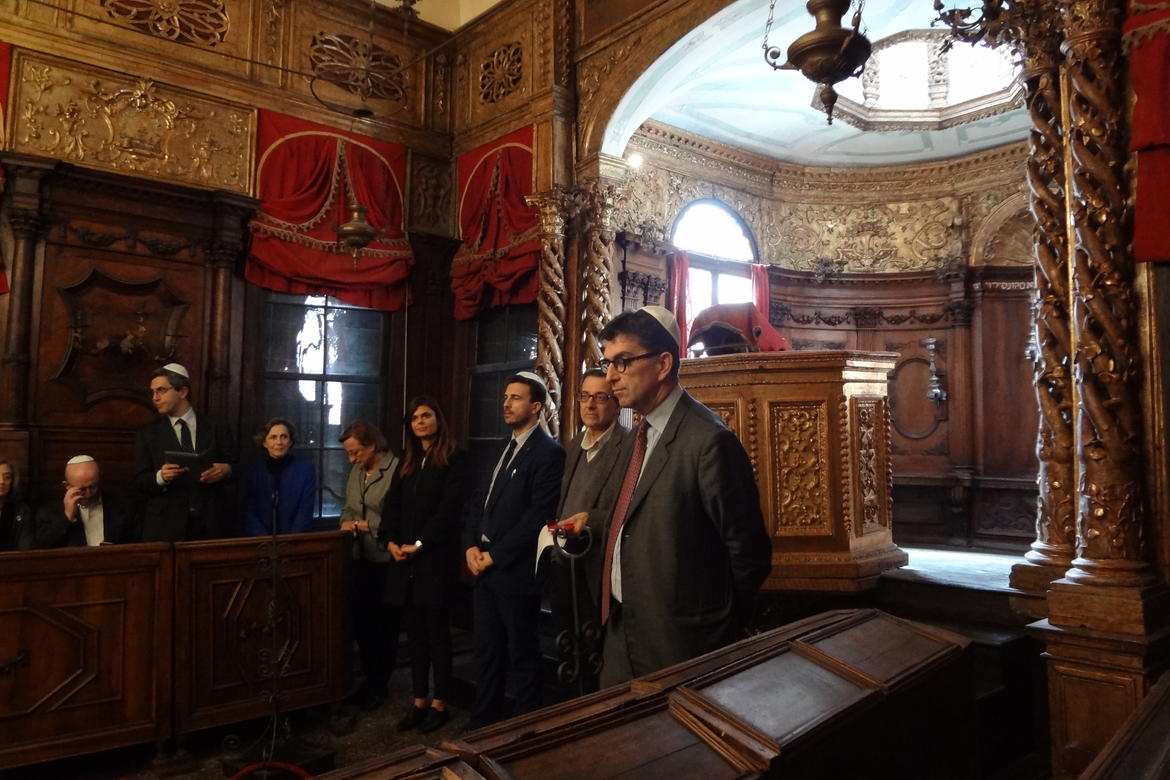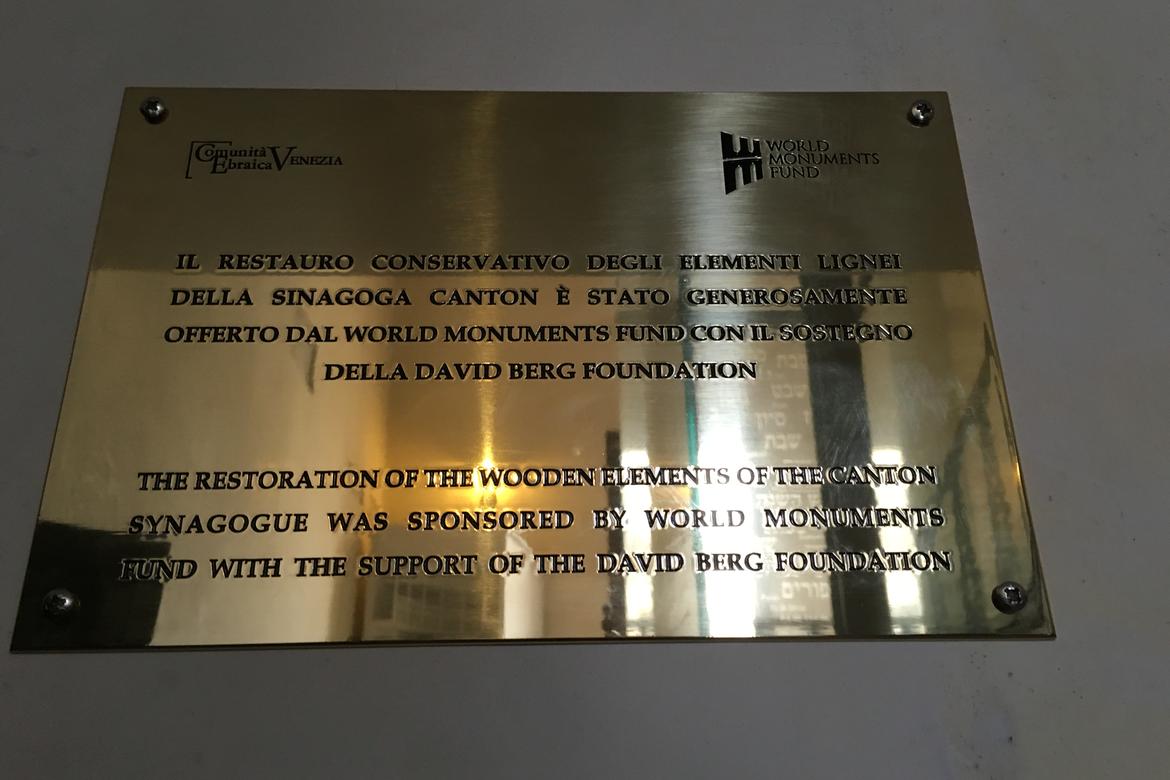Planes, Trains, and Automobiles—Destination: Venice

One of the many perks of my job as Program Associate at World Monuments Fund is that every now and then, I get to travel to some of the sites under my purview. I have the opportunity to visit the wonderful projects I get to work on, and most of all, to meet with the local people involved at these sites.
With the Jewish Heritage Program, I travel to places where I never thought of going! Last year, my colleague and I visited two synagogues in Serbia and Croatia. This year at the end of March, I travelled alone for the first time—a whirlwind trip that would consist of nine planes, two trains, and countless taxis in a span of nine days. Destination countries: Italy and Romania.
The first stop was Venice, where I arrived on the date of the 500th anniversary of the Jewish Ghetto—the oldest ghetto in Europe. Fun fact, the word ‘ghetto’ comes from the Venetian term for foundry (geto). In Venice, the Jews where sent to live in an area where the new foundry was located, the Ghetto Nuovo. While the ghetto nuovo (new) was the original area designated for the Jews, the ghetto vecchio (old) is the second area where they expanded. Here, in fact, new is old and old is new.
There are five synagogues, scholas, in Venice. Built between the early sixteenth century and mid-seventeenth century, each represents the different ethnic groups that settled and thrived there five centuries ago: Ashkenazi or German Jews, Italian Jews, and Sephardic Jews.
On March 30, the Museo Ebraico hosted a guided tour of the museum and the official opening of an exhibition of European Jewish Heritage routes, as well a tour of the three synagogues located in the museum. Participants included members of the European Council and the Jewish Community in Venice.
At the Schola Canton, where WMF supported the conservation of the sculptural wooden elements in the interior space in 2014-2015, participants gathered to learn about the project and see the magnificent end results. The lead conservator of LARES, the team of experts who carried out the work at Schola Canton, explained to all of us the labor-intensive process that was carried out over a year to clean and treat the gilded surfaces—reviving the synagogue’s lustrous decorative features. At the end of the presentation at Schola Canton, the Museo Ebraico unveiled a plaque acknowledging the support of the David Berg Foundation, through WMF, in the conservation of the interior decoration.
Read about Stephanie's next stop in Planes, Trains, and Automobiles - Destination: Romania.


